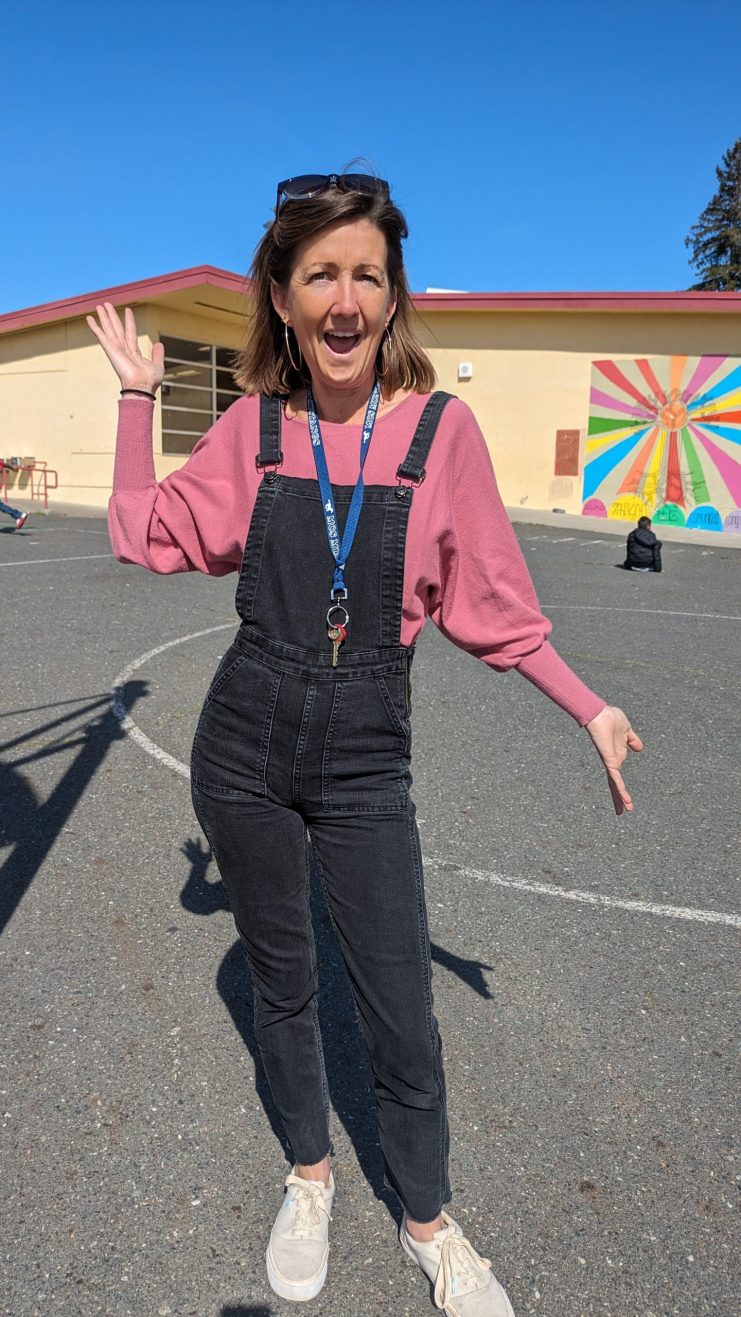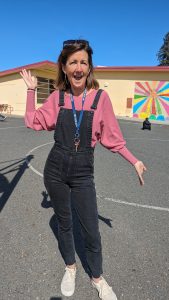
Getting Curious and Creative about Supporting Student Belonging at School
My goal for this past school year- to increase students’ sense of belonging at school- was based on one of my own insecurities. As the school social worker, I would walk around the hallways and classrooms, thinking I knew everyone’s name and face, and would suddenly see someone totally unfamiliar. I would feel uncomfortable asking them, or other students and teachers, who they were. It seemed like this experience had happened more frequently at my site since the COVID pandemic, where families are often forced to move homes or schools at inconvenient times. I’ve been at my school site for six years now, and I’d never known there to be any process around welcoming new students and families, so I set out to create one, with the idea of incorporating current students in the process as well.
Focusing on the Social Emotional Learning (SEL) competency of “relationship skills,” in my participation in the Oakland Unified School District (OUSD) and Lead by Learning SEL Teacher Inquiry Community of Practice, my goal was to build different types of student leadership to support welcoming new students. I wanted students to have more empathy for one another and to feel connected and welcome in our community. First, drawing on an example I’d seen from one of my Newcomers Social Worker colleagues, I developed a new procedure to welcome new students. Below was our procedure:
New Student Procedure
- Staff emails about new student (school social worker, Community Schools Manager, teacher, admin)
- When family arrives/registers, provide a welcome letter (and family handbook) from a folder in the office
- School social worker, reach out to complete this intake form
- School social worker to announce to classrooms (9/26)
- TK-1st: Have teachers pick 2 students from each class
- 2-5th: students can nominate themselves and apply
Mini-training with w/school social worker and student advocate (at lunch time)
Then I started a “student ambassador” program, and found a colleague to lead the program with me and share it with teachers at our staff meeting.
With Lead by Learning at our monthly community of practice, I was asked to think through my goals for the program and what would indicate success. I wanted three things:
- Students have friends and/or adults who help them feel welcome,
- Students have an increased sense of belonging at school
- Students have an increased sense of empathy from and for different types of students, including new students.
I then began my inquiry and was asked to collect data using a Learning Partnership Conversation with focal students. I created a student interview for both new students and student ambassadors, which helped me name what success would look like and see if we were meeting my goals.
***
Some questions from the interviews, and a few student answers…
Tell me about a time you felt welcomed in the past.
“Someone at my old school asked me to be my friend.”
“Having a younger sibling here.”
“Valentina made me feel welcome.”
“I was alone at the playground at [our school] then a bunch of friends came up to talk to me and play tag.”
What do you need to feel successful in school? What do you think new students need?
“More adults to talk to/check in with when needing help.”
“Thinking happy thoughts (my teacher)”
“Focus, confidence”
“They need love, care, and respect (even when they’re acting mean)”
“Having someone to talk to, guide me in the right direction”
“Having groups with new students and current students”
***
I saw from my data that new students (and returning) had ideas on what could make school better, and still needed support, specifically on building peer support.
Next, I decided to try a “No One Eats Alone” program, an idea that came from previous work I had done with the nonprofit Beyond Differences. After introducing it to our administration and colleagues to get buy-in, I worked with the Student Ambassadors to make a plan and think about someone they could invite to lunch who was either a new student or someone who could use a friend. The student leaders were excited and thought of a great list of peers to invite to lunch. During lunch, they did an art activity with the new friend they had invited, sharing different parts of their identities and things they had in common.
I debriefed the “No One Eats Alone” (NOEA) event with both the students who were invited and the Student Ambassadors who invited them. Some quotes are captured below:
- “Now I think a lot more about what it would be like to be a new student.”
- “Sometimes people want to be by themselves. Other times, they just want someone to check in on them!”
- “There are so many times I would see someone sad or lonely, but I wouldn’t know what to do. Now I know I can just try to say hello and they might really want a friend.”
- “It was cool to be included in something, and to learn new things about someone I see every day.”
- “Can we do another one?!”
This process reminded me that it can be hard for students to know what to say to each other or what questions to ask. They don’t get many opportunities to learn about each other’s identities in class, or to imagine what it’s like to have a different kind of identity. Creating a new system of welcoming new students was working fine, but new students were still having a hard time (especially some of them); it was having the current students involved and building leadership/empathy that made a difference. At the event, having questions that the students could ask each other really helped, and they didn’t feel as nervous about getting to know each other.
With the help of my Community Schools Manager, we posted some of these question prompts and the artwork students created around the cafeteria. We decided to try one more “NOEA Day” before the end of the year. This time we did a slightly different activity (a BINGO game), which was a big success.
Next year, I want to continue the process of welcoming new students, but also frontload at the beginning of the year with teachers. I plan to share with them a lesson from “Caring Schools Community” to help with welcoming new students, and also use this as an opportunity make the Student Ambassador process more visible for teachers. Lastly, I want to work harder to get new families on board as well. My most important goal is that we ALL feel seen, known, and included at school every day.
 Chrissy Highet has been the school social worker at Manzanita Community in Oakland Unified School District for six years, and in education for sixteen. Outside of school, she also loves practicing/teaching yoga, traveling, and hanging with her therapy dog Revi and her three-year-old!
Chrissy Highet has been the school social worker at Manzanita Community in Oakland Unified School District for six years, and in education for sixteen. Outside of school, she also loves practicing/teaching yoga, traveling, and hanging with her therapy dog Revi and her three-year-old!
Interested in working with Lead by Learning to support your educators and teacher leaders? Connect with a member of our team to learn more about our partnerships.
